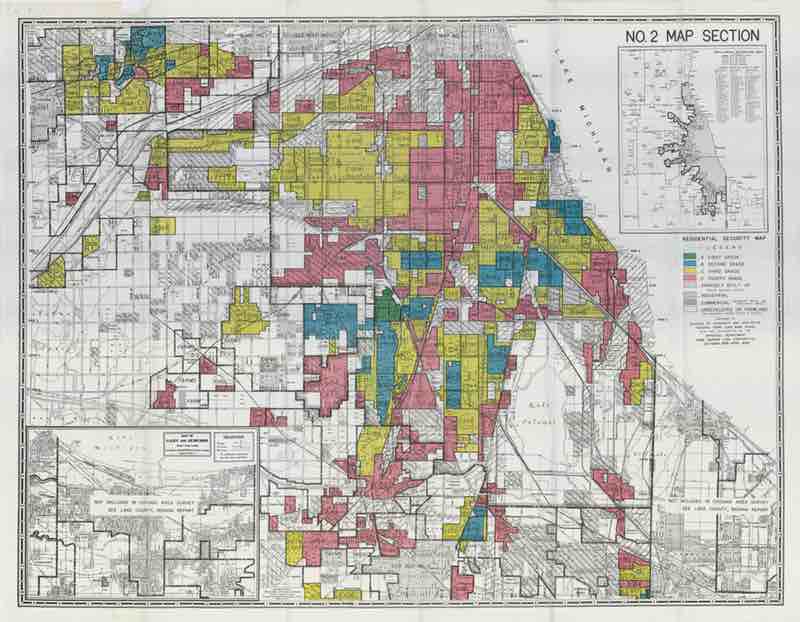Wed 2/8 @ 7PM
I know about redlining and its evil twin, blockbusting, from personal experience. In the four years between when I graduated from high school and my younger sister did, our south side Chicago neighborhood went from majority white to majority black. (Fun fact: one of the new families who moved in, just five blocks from us, was Michelle Obama’s). The wave rolled over the South and West Sides of Chicago, as racial lines were breeched and white people stampeded to the suburbs.
The ground for these transitions was laid back in the 1930s when FDR created the Home Owners’ Loan Corporation (HOLC) to finance home mortgages in default and offer more opportunities for people to purchase homes. If they were white. In a nutshell, redlining involved mortgage financers, such as banks, identifying certain areas as good risks and indicating others (seen in red on maps) as poor risks. Often “poor risk” simply meant “darker skin color.” In many cases it still does.
The Maltz Museum is hosting a forum that looks at how redlining, which in many ways isn’t simply historical, still impacts Cleveland today. Ayonna Blue Donald, former director of Cleveland’s Department of Building and Housing, moderates a panel that includes in conversation with Burten, Bell, Carr Development Inc.’s executive director Joy D. Johnson; executive director of Cleveland Housing Network Kevin J. Nowak; and Ward 7 Cleveland Councilwoman Stephanie Howse. They’ll talk about how the past influences the present and what needs to be done now to get past the racial housing inequities that still exist here.
Go here to register.
